
Ahead of sessions kicking off on June 13, Jessica Ailani, MD, FAHS, offers a look into what data, plenary talks, and developments are set to be presented at the upcoming AHS 2020 annual meeting.

Ahead of sessions kicking off on June 13, Jessica Ailani, MD, FAHS, offers a look into what data, plenary talks, and developments are set to be presented at the upcoming AHS 2020 annual meeting.
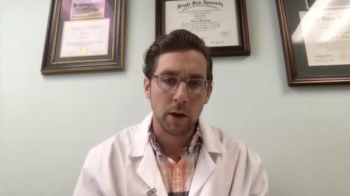
The clinical health psychology fellow at the Mellen Center for MS Treatment and Research at Cleveland Clinic details the use of behavioral health and potential use of Conformity to Masculine Norms Inventory (CMNI) tool in multiple sclerosis care.

The AHS fellow, director of MedStar Georgetown Headache Center, and associate professor of neurology at MedStar Georgetown University Hospital spoke to the rapid expansion of headache medicine and what new research will be discussed at AHS 2020.

The AHS fellow, director of MedStar Georgetown Headache Center, and associate professor of neurology at MedStar Georgetown University Hospital discussed what topics the plenary talks will cover at AHS 2020.

Carrie Hersh, DO, MSc, assistant professor of neurology at the Cleveland Clinic Lerner College of Medicine, discusses recent data on natalizumab as well as what sets it apart from other multiple sclerosis treatments.

The AHS fellow, director of MedStar Georgetown Headache Center, and associate professor of neurology at MedStar Georgetown University Hospital spoke to what to expect from this year’s annual scientific meeting.

Head of Global Clinical Development in Neurology at EMD Serono discussed the findings of a phase 2 assessment of the company’s investigational BTK inhibitor evobrutinib in multiple sclerosis.

The vice president of Global Program Leadership in Neurology and Immunology at EMD Serono discussed the recent long-term phase 2 data on evobrutinib presented at CMSC 2020.
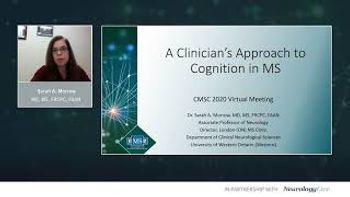
Sarah Morrow, MD, MS, presents her lecture titled, "A Clinician’s Guide to Cognition in MS" as part of the 2020 CMSC Virtual Annual Meeting.

Jennifer Graves, MD, PhD, presents her lecture titled, "The Role of Biological Aging in MS Progression" as part of the 2020 CMSC Virtual Annual Meeting.

Riley Bove, MD, presents her lecture titled, "Caring for Women Across the Reproductive Lifespan" as part of the 2020 CMSC Virtual Annual Meeting.
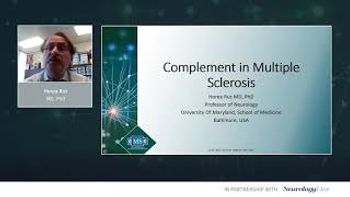
Horea Rus, MD, PhD, delivers his lecture titled, "The Role of Complement in MS" as part of the 2020 CMSC Virtual Annual Meeting.

Sergio Baranzini, PhD, presents his lecture titled, "Genetics Update" as part of the 2020 CMSC Virtual Annual Meeting.
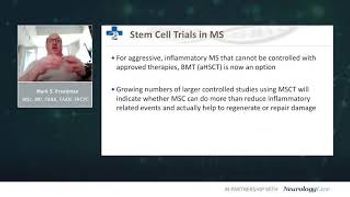
Mark Freedman, MSc, MD, presents the John F. Kurtzke Lecture, titled "Stem Cell Research Update" as part of the 2020 CMSC Virtual Annual Meeting.

Improvements in function may be mediated by an effect of aerobic fitness on deep gray matter brain structures.

An analysis of data from the phase 3 development of cladribine (Mavenclad; EMD Serono) showed that the incidence of treatment-emergent adverse events was low and most were mild in intensity.
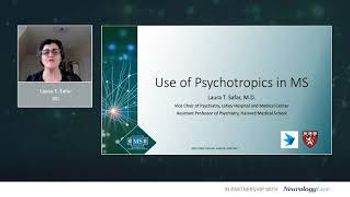
Laura Safar, MD, presents her lecture titled, "Use of Psychotropics in MS: Antidepressants, Anti-anxiety Agents, Mood Stabilizers, Hypnotics, Antipsychotics, and Cognitive Enhancers" as part of the 2020 CMSC Virtual Annual Meeting.

Allen Bowling, MD, PhD, presents his lecture titled, "Cannabis and MS: Efficacy, Safety, Drug Interactions, and Research Update" as part of the 2020 CMSC Virtual Annual Meeting.

Benjamin Greenberg, MD, presents his lecture titled, "Emerging Therapies Across the Disease Spectrum" as part of the 2020 CMSC Virtual Annual Meeting.

The chair of the Department of Neurosurgery at Banner-University Medical Center discusses the current state of the science being done in the realm of epilepsy surgery.

A subset group of inebilizumab-treated patients who did not have adjudicated attacks displayed more than a 2-fold increase in serum CSF glial fibrillary acidic protein from baseline, implying GFAP may serve as a biomarker.

Findings from a study of more than 500 girls with multiple sclerosis suggest that first menstruation and the onset of puberty may be a time of increased disease activity in pediatric MS.
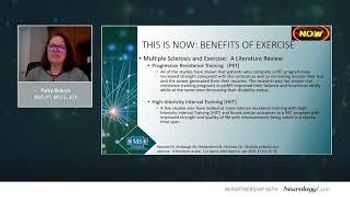
Patricia Bobryk, MHS, PT, MSCS, ATP, presents her lecture titled, "Rehabilitation in MS: That Was Then, This Is Now" as part of the 2020 CMSC Virtual Annual Meeting.
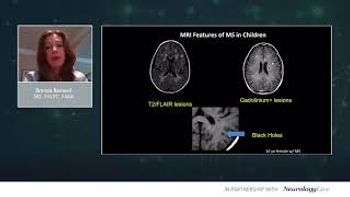
Brenda Banwell, MD, presents her lecture titled, "Current Perspectives of Pediatric MS Care and Research" as part of the 2020 CMSC Virtual Annual Meeting.

Data from the overall satralizumab treatment period, which expanded on the double-blind periods by adding new data from the ongoing open-label extension periods, were consistent with the double-blind period results.

Mona Bostick, RDN, LDN, presents her lecture titled, "The Importance of Assessing Nutritional Health in Patients With MS" as part of the 2020 CMSC Virtual Annual Meeting.
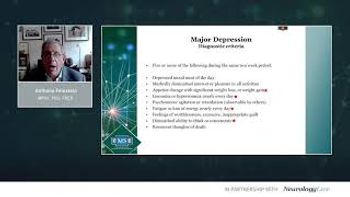
Anthony Feinstein, MPhil, PhD, FRCP, presents his lecture titled, "Depression and MS: Diagnosing and Treating" as part of the 2020 CMSC Virtual Annual Meeting.

A real-world survey of more than 300 health care practitioners suggests that the MSProDiscuss tool offers a useful tool for the physician-patient discussion on multiple sclerosis disease progression.

Increases in physical, emotional, and cognitive functioning were more common in patients receiving natalizumab than in patients receiving other disease modifying therapies.

The Novartis agent showed benefit in patients who had multiple sclerosis both with and without relapses.